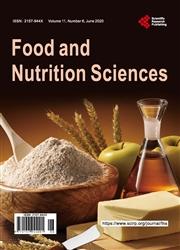Uniqueness of Tryptophan in the Transport System in the Brain and Peripheral Tissues
引用次数: 1
Abstract
Amino acids are important substances that must be transported to tissues such as the brain and muscles. The process is considered insulin dependent. It is not known whether all the amino acids are almost equally dependent in their transportation to tissues. We want to know whether some important amino acids are transported differently from other amino acids. Especially tryptophan is important because it is converted to serotonin, melatonin or kynurenine. Results showed that Amino acids levels in the plasma were measured after the intakes of 50 grams of glucose or sucrose to young (18 - 22 years old) and old (≥50 years old) men. Total amino acids in the plasma decreased after the intakes of glucose. Total amino acids levels decreased more significantly in old men after the administration of sucrose. Total and non-essential amino acids in the plasma decreased significantly at 120 min after the intakes of glucose in young and old men, but only sucrose caused their decreases in both aged and young men. Both glucose and sucrose intakes decreased significantly the plasma levels of the total essential and branched amino acids in young and old men. Surprisingly, plasma levels of tryptophan did not decrease upon the administration of glucose but only slightly decreased upon the administration of sucrose in young men. In conclusion, not all the amino acids were transported well into tissues upon the administration of glucose or sucrose. Tryptophan seems to be relatively resistant for insulin to facilitate the transportation into tissues.色氨酸在脑和外周组织运输系统中的独特性
氨基酸是重要的物质,必须运输到组织,如大脑和肌肉。这个过程被认为是胰岛素依赖性的。目前尚不清楚是否所有的氨基酸在运输到组织中几乎都是同样依赖的。我们想知道一些重要的氨基酸是否与其他氨基酸的转运方式不同。色氨酸尤其重要,因为它可以转化为血清素、褪黑素或犬尿氨酸。结果表明,青年(18 - 22岁)和老年(≥50岁)男性摄入50克葡萄糖或蔗糖后,测定血浆氨基酸水平。葡萄糖摄入后,血浆中氨基酸总量下降。老年男性服用蔗糖后,总氨基酸水平下降更为显著。血浆总氨基酸和非必需氨基酸在摄入葡萄糖后120 min显著下降,但只有蔗糖导致老年和青年男性血浆总氨基酸和非必需氨基酸下降。葡萄糖和蔗糖的摄入显著降低了年轻人和老年人血浆中总必需氨基酸和支链氨基酸的水平。令人惊讶的是,年轻男性的血浆色氨酸水平在服用葡萄糖后没有下降,而在服用蔗糖后仅略有下降。总之,在葡萄糖或蔗糖的作用下,并不是所有的氨基酸都能很好地运输到组织中。色氨酸似乎相对抵抗胰岛素以促进其进入组织。
本文章由计算机程序翻译,如有差异,请以英文原文为准。
求助全文
约1分钟内获得全文
求助全文

 求助内容:
求助内容: 应助结果提醒方式:
应助结果提醒方式:


